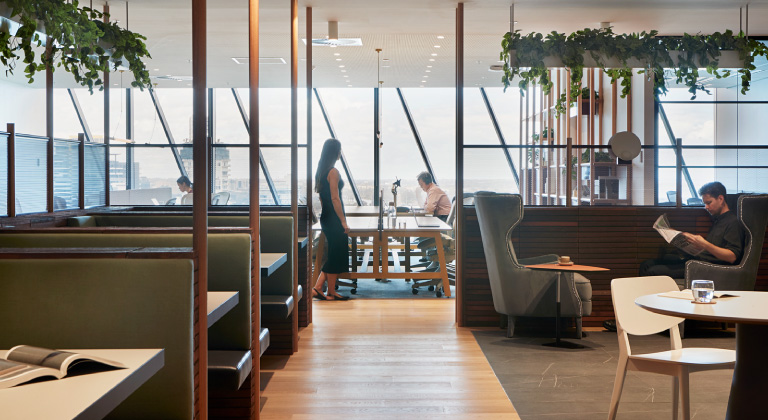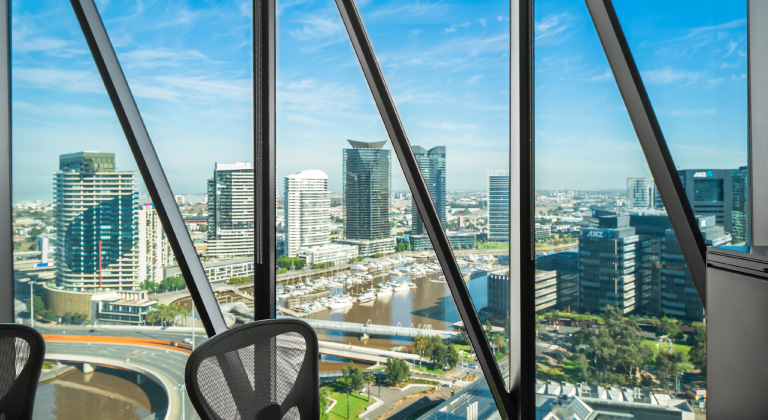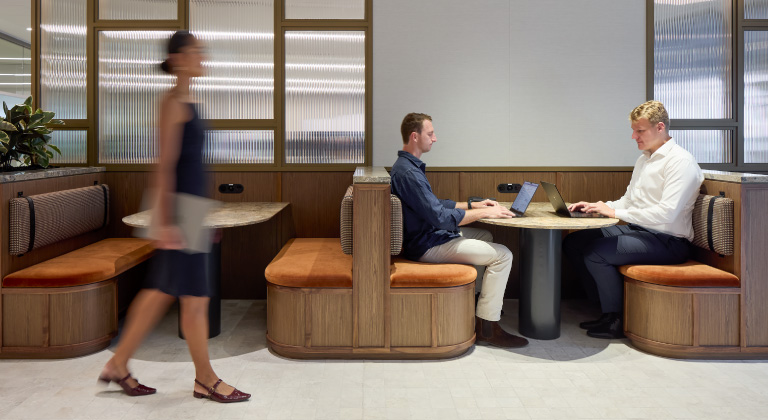Article
How Flexible Workspaces Are Reshaping Australia's Corporate Real Estate Market
Australia’s corporate real estate landscape is undergoing a profound transformation. Driven by the rise of hybrid work models, economic uncertainty, and a shift in workforce expectations, flexible workspaces — including coworking offices, private serviced offices, and virtual office solutions, are now playing a pivotal role in redefining how companies view and use commercial space.
The Decline of the Traditional Office Footprint
Prior to 2020, long-term leases and expansive central business district (CBD) footprints were the standard. However, as businesses adjusted to remote and hybrid models, many began questioning the value of maintaining large, underutilised offices. This shift has led to a steady decline in demand for traditional leases, particularly in metro CBDs like Sydney and Melbourne. According to the Property Council of Australia, office occupancy across major cities remains well below pre-pandemic levels.
Instead, companies are choosing smaller, more agile footprints supported by flexible workspace providers like The Executive Centre, that offer short-term leases, scalable options, and plug-and-play solutions.
The Rise of the Hybrid Work Model
The hybrid work model, where employees split time between home, HQ, and third spaces, has been one of the most significant drivers of change in corporate real estate. A 2021 global survey by CBRE found that 87% of companies globally have adopted a hybrid policy, with Australia ahead of the curve in flexible work adoption.
This model redefines the role of the office, from a place for daily work to a collaboration hub. In this context, flexible offices provide:
- Short-term leases
- Meeting rooms on demand
- Scalable team spaces
- Shared amenities and tech infrastructure
These features enable organisations to respond to changing headcounts or project-based needs without long-term commitments.

Decentralisation and the Growth of Suburban Hubs
Another emerging trend is the decentralisation of office demand. With more Australians moving to suburban areas and valuing reduced commutes, there has been a surge in demand for suburban coworking hubs, particularly in areas like Parramatta, Sunshine Coast, and outer Melbourne suburbs.
Flexible workspace operators have responded by expanding beyond CBD towers to strategically placed suburban business parks, enabling businesses to maintain a physical presence closer to where people live and work.

Benefits for Corporates and Landlords Alike
For corporate tenants, the benefits are clear:
- Lower capital expenditure
- Reduced lease liability
- Ability to scale up or down quickly
- Enhanced employee satisfaction
For landlords, partnering with established flexible workspace providers brings diversification, higher fit-out standards, and the ability to attract tenants that may not commit to full-floor leases otherwise. A 2023 Colliers report noted that buildings with integrated flexible space options have 15–20% higher tenant retention compared to those without.
Data-Backed Demand
According to a recent JLL report, up to 30% of all office space could be flexible by 2030. In Australia, flexible workspace occupancy rebounded quickly in 2023–24, especially in Class A buildings, where premium providers offer amenities like event spaces, concierge services, and wellness rooms, which were once only found in corporate headquarters.

What This Means for the Future
Flexible workspaces are no longer niche. They are now core to Australia’s commercial real estate strategy, offering a sustainable, efficient alternative to traditional leasing.
As we look to the future, expect more corporate real estate portfolios to feature a mix of:
- Core headquarters
- Flexible satellite hubs
- On-demand meeting/event spaces
- Virtual office registrations
This diversified approach supports talent mobility, cost efficiency, and long-term adaptability.
Whether you're a property owner, a corporate tenant, or an employee, the message is clear: flexibility is the future. As Australia’s workforce continues to evolve, so too will its office spaces, and those embracing the shift now will be best positioned to lead in the years ahead.
Future-Proof Your Workspace Strategy
At The Executive Centre, we offer flexible office solutions tailored to modern business needs, whether you're downsizing, decentralising, or embracing hybrid work.
Explore our centres across Australia
Get in touch with our team to discuss a solution that fits your business
Or keep learning with our next article: Unlock the Freedom to Work from Anywhere




